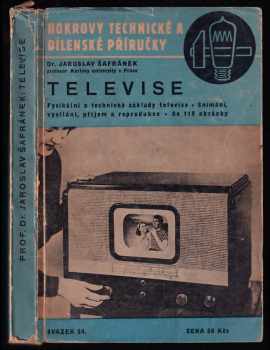A SLIGHTLY DIFFERENT PICTURE
The first ideas of a television combined two phenomena of their time - radio, that is, the transmission and reception of signals over longer distances, and cinematography, that is, moving pictures. However, it was not a mere combination of these two phenomena. What was needed was a revolution in the perception, or rather the nature, of the image. Cinemas used projectors that screened running strips of material on which images were captured chemically as a whole. With television, the image had to be broken down into individual points with specific coordinates and properties. In a television, this image is again composed and the points are assigned their features.
The invention of a television transmission builds on a number of previous discoveries. The Nipkow disc, introduced in 1884, was the basis. It was able to scan, transfer and then project the image again. Its disadvantage was the disproportion between the size of the device and the projected image (a disc 30 cm in diameter could scan or project an image the size of a postage stamp).
The second major invention was the Braun tube (1897), an improved version of which is still known today as the cathode ray tube (CRT). This allows a relatively precise direction of a stream of particles which, after contact with a luminescent layer, illuminate a given point on the screen. This technology ruled the world of televisions and computer monitors until the advent of plasma and LED displays.
Another major invention was the Ikonoscope, a scanning device that worked on the principle of the Nipkow disc but fundamentally reduced its shortcomings. The introduction of this device occurred in 1923 and since then the first real attempts at television transmission have also been reported.
The first recorded transmission of moving images by purely electronic means took place in 1926. Four years later, the first synchronised transmission of images and sound took place. Viewers had to wait until 1935 for regular television broadcasts to be made to the public in Germany and France.
The BBC is considered to be the world's first stable television station, broadcasting from 2 November 1936. By the Second World War it was still broadcasting in the Soviet Union and the USA. It was the United States that became the centre of the development of television broadcasting during the Second World War, as the effects of the war were not as severe there as in Europe. This is one of the reasons why the United States won the race for the first colour television transmission in 1953.
 The Nipkow Disc
The Nipkow DiscPIONEERING BEGINNINGS IN THE TERRITORY OF THE PRESENT-DAY CZECH REPUBLIC
The date of 1 May 1953 is considered to be the beginning of television broadcasting in Czechoslovakia. This was the date of the first official broadcast of Czechoslovak Television, which was then part of Czechoslovak Radio. But the unofficial history of television in the Czechoslovakia goes back even further.
The concept of television was already known among Czechoslovak radio amateurs and technology enthusiasts in the late 1920s. From the first half of the 1930s onwards, the first amateur attempts to build their own television receivers appeared in the Czechoslovakia. Radio amateurs (though actually teleamateurs) tried to pick up signals transmitted from London and Berlin. Officially, television was first seen in Czechia at the Prague Model Fair on 2 September 1934, where it was introduced by the German company Telefunken. The first television was marketed by the Moravian Radion factory a few years later, it was in the form of a kit and cost CZK 3,500, more than double the average wage of a senior civil servant at the time.
Fans of the new technology emerged from various social and professional backgrounds. In 1934, Professor Matyáš Färber from Podmokel introduced the idea of telecommunication of Czechoslovakia through four large transmitters. František Holeček from Vracovice pod Blaníkem was a private farmer and was not deterred in developing inventions related to television, which many believe were ahead of their time, even by the fact that the village where he lived was not electrified. Perhaps the most important inventor of this early phase of domestic television is Jaroslav Šafránek, associate professor of experimental physics at Charles University. His inventions include, among others, the first ever television transmitter and receiver that became fully operational in Czechoslovakia. The device had 30 lines and was presented to the public on 10 December 1935. In 1938 Šafránek completed a new version of his television device, which worked with 240 lines.
Television was initially rejected from official places. The change occurred due to social pressure in the mid-1930s. As a result, the first experimental transmitter was opened in 1935. From that year until the beginning of the war, there were speculations in the press that television would start broadcasting soon, but it did not happen. The development of television was then slowed down because of World War II.
THE POST-WAR ROAD TO TELEVISION
Ironically, World War II helped television on our territory. Some parts of German production and research were moved here, and then everything was confiscated at the end of the war and immediately afterwards in the name of the re-established state. The television research centre was in the former German factory Zentralstelle für Röhrenforschung in Tanvald, now renamed Televid. The army, among others, was intensively interested in the research results.
One of the first achievements was the 625-line television system introduced at the end of 1947. A year later, the first television broadcasts were made, both of the International Radio Exhibition and the Sokol Gathering. In Prague, 25 television receivers were placed in various institutions, which received the signal from the Petřínská tower. There were two more receivers in South Bohemia and in the Krkonoše Mountains.

Source: televizniweb.cz

